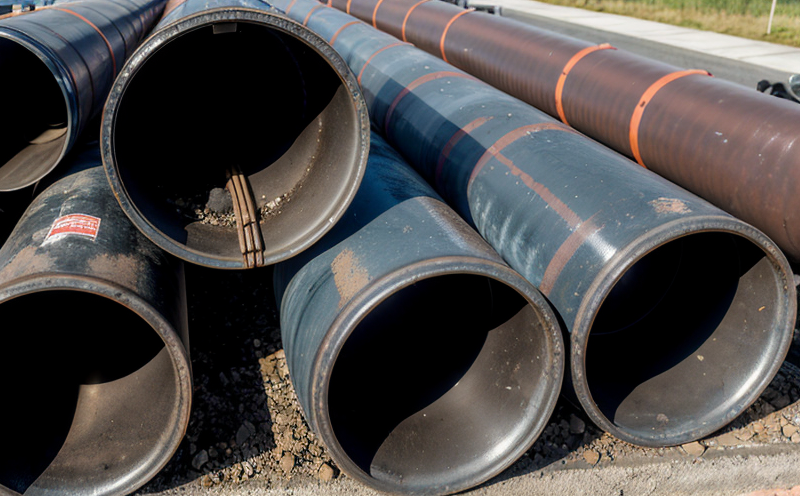UL 94V Vertical Flame Testing of Plastic Tubes
The UL 94V vertical flame testing is a critical procedure used to evaluate the flammability properties of plastic materials. This test measures how quickly and intensely the material ignites, and it assesses its self-extinguishing capabilities under controlled conditions.
This standard is especially important for industries where fire safety is paramount, such as automotive, electronics, consumer products, and building materials sectors. The UL 94V test helps ensure that plastic tubes used in these applications meet stringent flame retardancy requirements, thereby enhancing overall product safety and compliance with relevant regulations.
During the testing process, a sample of the plastic tube is exposed to a vertical flame for a specified duration. The flame is then removed, and the behavior of the sample as it burns, self-extinguishes, and chars is carefully observed. The test results provide valuable insights into the material's resistance to ignition and its ability to limit fire spread.
The UL 94V standard specifies that a plastic tube must not melt or drip in a way that would promote flame spread. This ensures that any potential fire hazard remains contained within the immediate area of contact, reducing risks to surrounding materials and structures.
For accurate and reliable testing results, proper specimen preparation is essential. The specimens should be cut into specific lengths and cross-sectional areas as per the UL 94V guidelines. Adherence to these standards ensures that all samples are tested under consistent conditions, allowing for meaningful comparisons between different materials or batches.
The testing apparatus used in this procedure includes a vertical burner and a measuring device to record the time it takes for the flame to spread along the specimen. The temperature of the environment is also controlled to ensure uniformity across all tests.
Once the test is conducted, the results are evaluated based on specific criteria outlined in the UL 94V standard. These include the time taken for the flame to start burning, the duration it burns, and whether or not the material self-extinguishes without melting or dripping.
The test provides a critical assessment of plastic tubes' flammability characteristics, which is vital for ensuring product safety in various applications. By meeting UL 94V standards, manufacturers can demonstrate compliance with relevant fire safety regulations and enhance consumer confidence in their products.
| Application | Description |
|---|---|
| Automotive Components | Ensuring safety in vehicle interiors and under-the-hood components. |
| Electronic Devices | Avoiding fire hazards in circuit boards and enclosures. |
| Consumer Products | Maintaining safety standards for household appliances and toys. |
| Building Materials | Preventing fire spread in structural elements like pipes and insulation materials. |
The UL 94V test is a cornerstone of material safety standards, ensuring that plastic tubes used across various industries meet rigorous flammability requirements. Its importance cannot be overstated, as it directly impacts public safety by reducing the risk of fire-related incidents.
By adhering to this standard, manufacturers can ensure their products are reliable and safe for use in environments where fire resistance is critical. This commitment not only enhances product performance but also builds trust with consumers and regulatory bodies alike.
Industry Applications
The UL 94V vertical flame test finds extensive applications across various industries, particularly those where fire safety is a critical concern. One such industry is the automotive sector, where plastic tubes are used in vehicle interiors and under-the-hood components.
In this context, ensuring that these materials meet the stringent flammability requirements of UL 94V is essential to prevent fires from spreading rapidly within confined spaces. This not only enhances passenger safety but also protects valuable equipment and systems integral to vehicle operations.
For electronic devices, the use of plastic tubes in circuit boards and enclosures is widespread. Here, the UL 94V test ensures that these components remain safe under extreme conditions, reducing the risk of short circuits or overheating that could lead to fires.
In consumer products, such as household appliances and toys, meeting this standard is crucial for maintaining safety standards that protect users from potential fire hazards. This is especially important in items that children might interact with frequently.
The building materials sector also benefits significantly from UL 94V compliance. Plastic tubes used in insulation and structural elements must meet rigorous flame retardancy requirements to prevent fires from spreading through buildings, thereby protecting lives and property.
| Application | Description |
|---|---|
| Ventilation Systems | Ensuring that air ducts and ventilation tubes do not contribute to fire spread. |
| Furniture | Making sure decorative tubing used in furniture is safe from ignition. |
| Medical Devices | Guaranteeing that tubing materials for medical devices comply with safety standards. |
| Pipe Insulation | Avoiding fire risks in residential and commercial buildings by using UL 94V compliant materials. |
By incorporating UL 94V-compliant plastic tubes into their products, manufacturers can ensure a higher level of safety across these diverse applications. This not only meets regulatory requirements but also enhances the overall performance and reliability of end products.
International Acceptance and Recognition
The UL 94V vertical flame test is widely recognized and accepted internationally, contributing significantly to global fire safety standards. This standard's broad acceptance underscores its importance in ensuring that plastic tubes used across various industries meet stringent flammability requirements.
Many countries have adopted the UL 94V test as a key component of their national fire safety regulations. For instance, it is widely recognized by organizations such as Underwriters Laboratories (UL), the European Committee for Standardization (CEN), and the International Organization for Standardization (ISO).
The standard's global recognition extends to its use in regulatory frameworks like the North American National Fire Protection Association (NFPA) standards, which often reference UL 94V as a benchmark. Similarly, it is referenced in European Union directives such as the Restriction of Hazardous Substances Directive (RoHS).
The widespread acceptance of UL 94V ensures that products meeting this standard can be sold and used worldwide with confidence, knowing they meet internationally recognized safety benchmarks.





